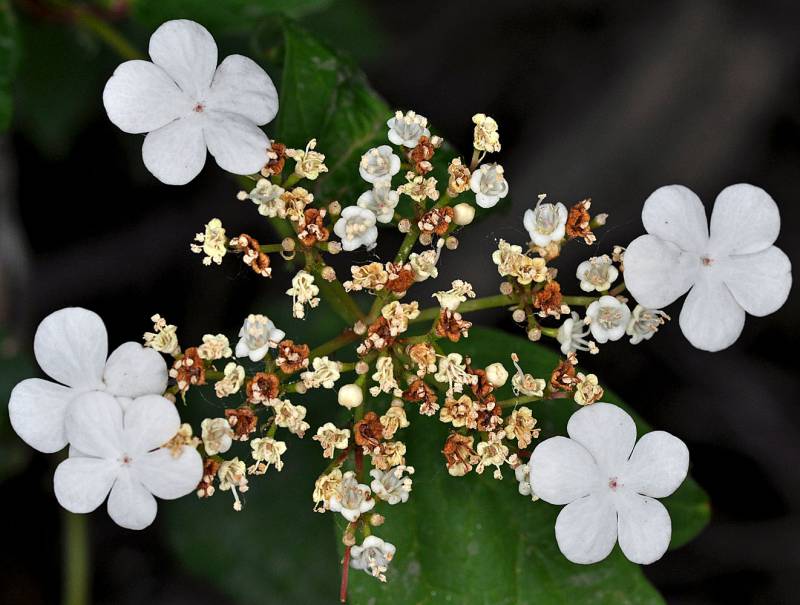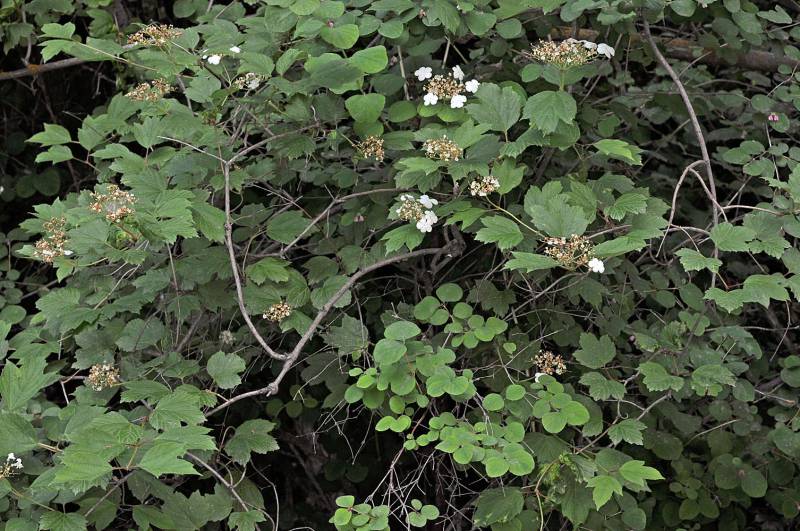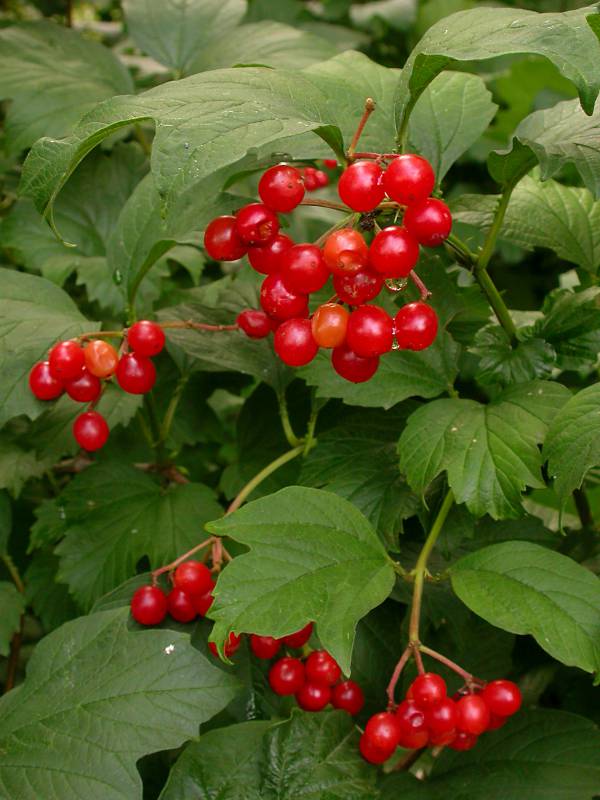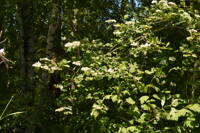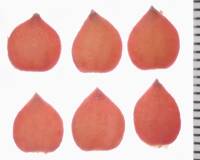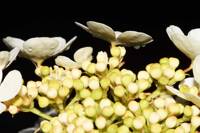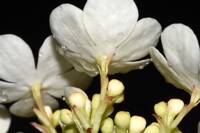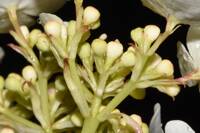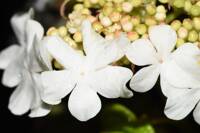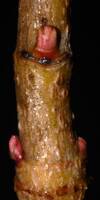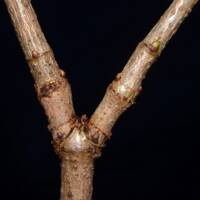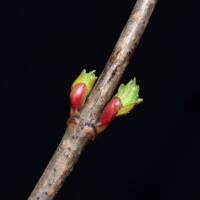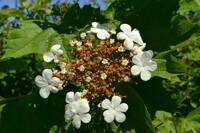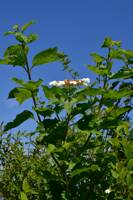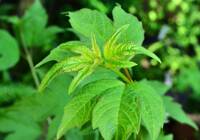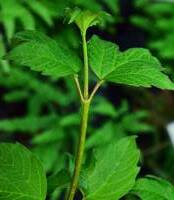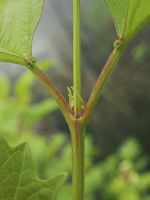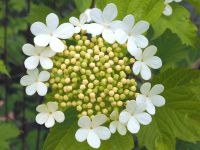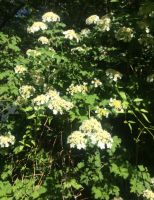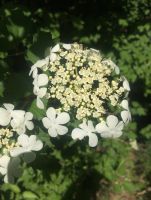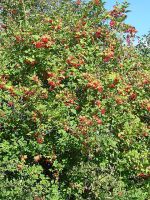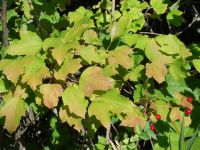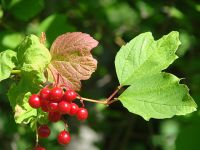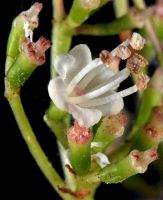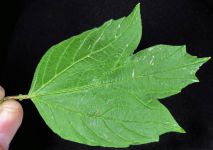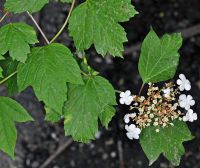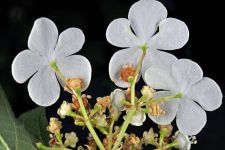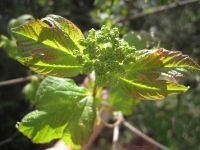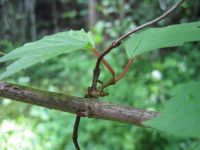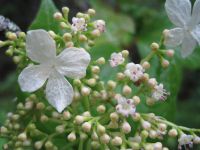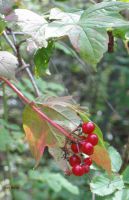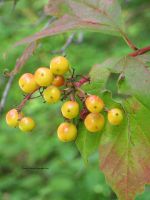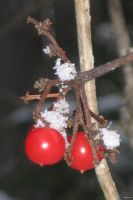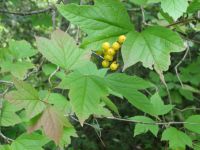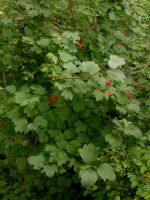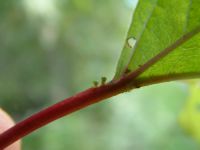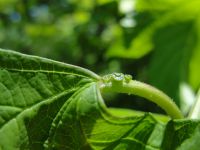Distribution: Occurring on both sides of the Cascades crest in Washington; British Columbia to Oregon, east across Canada and the northern U.S. to the Atlantic Coast.
Habitat: Moist woods at low to moderate elevations.
Flowers: May-July
Origin: Native and introduced from Eurasia
Growth Duration: Perennial
Conservation Status: Not of concern
Pollination: Flies, moths, beetles
Deciduous shrub or small tree 1-4 m. tall.
Petioles 1-3 cm. long with linear stipules 2-6 mm. long, glabrous except for one or more stalked glands near the summit; leaves opposite, usually with stiff hairs along the mid-vein beneath, palmately 3-veined and 3-lobed, 4-12 cm. long and wide, the lobes usually coarsely few-toothed and acuminate.
Inflorescence a compound umbel, short-pedunculate, 5-15 cm. wide, the marginal flowers enlarged and neutral, their corollas rotate, white, deeply 5-lobed, somewhat irregular, 1.5-2.5 cm. across; perfect flowers much smaller, 3-4 mm. across; stamens 5, exerted; ovary inferior, 3-celled, but only I cell fertile.
Fruit a drupe, 1-1.5 cm. long, with a large, flattened stone, red.
Publication: Sp. Pl. 1: 268. 1753.
-
var. americanum – American cranberry-bush, American high-bush cranberry
 Occurring east of the Cascades crest in northeastern Washington; southern British Columbia to northeastern Washington, east to northeastern North America.
Occurring east of the Cascades crest in northeastern Washington; southern British Columbia to northeastern Washington, east to northeastern North America. -
var. opulus – European cranberry-bush, European high-bush cranberry
 Occurring on both sides of the Cascades crest in Washington; southern British Columbia to Oregon, east to westerm Montana; also in eastern North America.
Occurring on both sides of the Cascades crest in Washington; southern British Columbia to Oregon, east to westerm Montana; also in eastern North America.
PNW Herbaria: Specimen records of Viburnum opulus in the Consortium of Pacific Northwest Herbaria database
WA Flora Checklist: Viburnum opulus checklist entry
OregonFlora: Viburnum opulus information
E-Flora BC: Viburnum opulus atlas page
CalPhotos: Viburnum opulus photos

